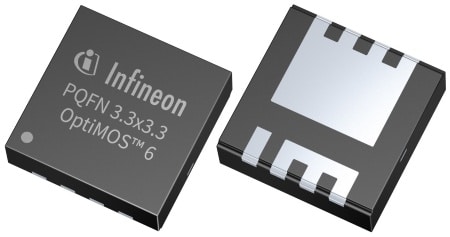OptiMOS™ 6 100 V significantly improves technology to set a new industry standard for high switching frequency applications
There is a clear trend toward higher efficiency and reliability in modern switch-mode power supplies (SMPS) and battery-powered applications. Infineon Technologies AG introduces the OptiMOSTM 6 100 V with a new power MOSFET technology to support this trend. The new technology is designed specifically for high switching frequency applications such as telecommunications and solar, where losses are associated with charges (switching) and on-state resistance (conduction). At the same time, it is ideal for battery-powered applications (BPA) and battery management systems due to its best-in-class R DS(on) and wider safe operating area (SOA) (BMS).
The OptiMOS 6 100 V family of MOSFETs feature improved RDS(on) and the industry’s best figures-of-merit thanks to a novel design concept (FOMs). It combines the advantages of extremely low on-state resistance with superior switching performance. The unique features of OptiMOS 6 enable easier thermal design and less paralleling, resulting in excellent efficiency, increased power density, lower system costs, and a longer lifetime. OptiMOS 6 is a “game-changer” in the telecom market, achieving 18% lower RDS(on) and more than 30% improvement in FOMs (RDS(on) x Q g and Q gd) compared to the state-of-the-art OptiMOS 5. OptiMOS 6 in SuperSO8 package with 2.2 m can achieve one per cent higher efficiency than OptiMOS 5 BSC027N10NS5 (2.7 m) across the entire load range in a 600 W, -(36-60) V to 12 V ZVS buck-boost converter. As a result of improved charges and RDS(on), power loss is reduced by 7 W, allowing for up to 15% higher power density. Among the key advantages, the new technology in the 100 V range allows for lower conduction and switching losses, as well as the elimination of the need for paralleling parts.
OptiMOS 6 100 V is an energy-efficient solution that helps to make the world a greener place. By switching to the new MOSFET technology in the framework of the telecom power system, the annual electricity savings potential equals the electricity consumption of 170 households. The devices contribute to a one-million-euro reduction in energy consumption over a ten-year period*.
Also read India’s Clean Power Revolution








Leave a Reply